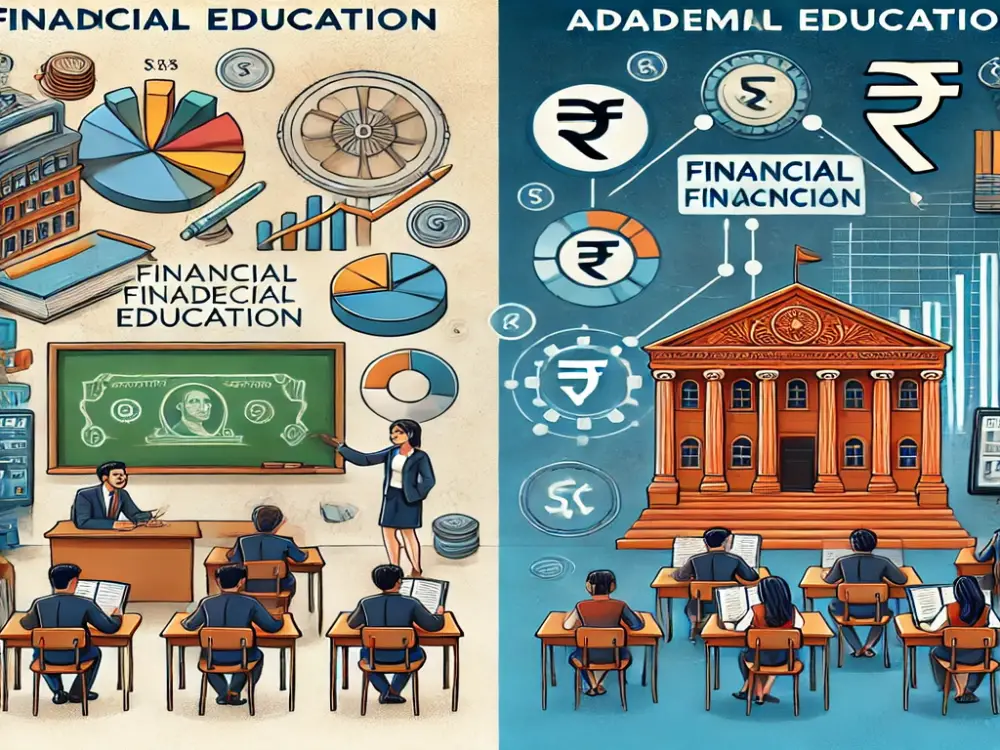Despite the growing importance of managing money and understanding personal finance, most educational systems, including India's, have largely overlooked this essential skill. Financial education equips individuals with the knowledge to manage money effectively, make informed decisions, and plan for a secure future.
India's Financial Literacy Challenge
Without practical financial skills, academic knowledge is incomplete. A critical gap in India's education system leaves its citizens vulnerable in a complex global economy.
A Stark Reality
According to a SEBI study, a staggering 73% of the Indian population is not financially literate. This lack of essential life skills has profound implications for personal well-being, economic stability, and national progress, highlighting a systemic failure to prepare individuals for the financial realities of modern life.
Why Financial Literacy is a Superpower
The benefits of financial education extend far beyond the individual, creating a ripple effect that strengthens families, communities, and the national economy.
Personal Stability
Empowers individuals to budget, save, invest, and avoid debt, leading to reduced financial stress and improved mental well-being.
Economic Growth
Informed financial decisions stimulate investment in productive assets, fueling business expansion, job creation, and market efficiency.
Consumer Protection
A knowledgeable populace is less vulnerable to financial scams and predatory practices, fostering safer financial markets for everyone.
Generational Impact
Financially literate parents raise financially literate children, creating a positive cycle of responsible citizenship and long-term security.
The Education Divide
Traditional schooling provides a vital academic foundation, but it's structurally misaligned with the practical, real-world skills needed for financial well-being. This section explores why the system falls short.
Academic vs. Financial Education
Academic Education
Financial Education
Why Traditional Schools Fall Short
Historical Priorities
Post-independence, India's curriculum focused on nation-building and industrialization, sidelining personal finance as a critical skill.
Pedagogical Mismatch
Rote memorization and standardized tests are ill-suited for teaching practical financial skills, which require experiential, hands-on learning.
Curriculum Constraints
Packed schedules make it difficult to integrate a new subject, creating opportunity costs for core academics and extracurriculars.
Teacher Preparedness
There is a significant lack of educators with the specialized knowledge and pedagogical skills needed to teach financial literacy effectively.
A New Blueprint for Action
Recognizing the gap, India has developed new policies and initiatives. This section explores the official strategy for integrating financial literacy into the mainstream.
The NEP 2020 Vision: A Staged Approach
The National Education Policy 2020 introduces financial concepts progressively, from foundational play to practical secondary-level skills.
The Policy-Implementation Chasm
Despite ambitious policies, on-the-ground adoption is lagging significantly. As of 2019, the vision for widespread financial education in schools remained largely an aspiration.
Key Regulatory Initiatives
The National Centre for Financial Education (NCFE) spearheads the national strategy, developing content like the Money Smart School Program and aiming to reach 500 million Indians by 2025 through its '5 C' approach: Content, Capacity, Community, Communication, and Collaboration.
Financial Insights ✨
Leverage AI to quickly grasp financial terms or get general guidance on common financial scenarios. Think of this as your quick-reference financial assistant.
Explain a Financial Term ✨
Get Scenario Advice ✨
Building a Financially Empowered India
Closing the gap requires a coordinated, multi-faceted approach. Here are the key recommendations to turn policy into a practical reality for all citizens.
Curriculum & Pedagogy
Embed financial literacy across all stages and subjects. Shift from theory to hands-on, experiential learning with real-world simulations and digital tools.
Teacher Training
Implement comprehensive, mandatory training programs to equip educators with both financial knowledge and effective, interactive teaching strategies.
Stakeholder Collaboration
Foster strong partnerships between government bodies, regulators, schools, and communities to ensure synchronized and impactful efforts.
Cater to Diverse Needs
Develop tailored approaches for varied socioeconomic backgrounds and vulnerable populations, ensuring equitable access and relevance for all students.
Measure What Matters
Move beyond knowledge tests. Continuously evaluate programs based on tangible improvements in consumer behavior like saving habits and debt management.
Parental Involvement
Encourage families to reinforce school lessons through open conversations about money and involving children in real-life financial decisions.
Indian education system, Financial Education, education system in india, financial learning,
